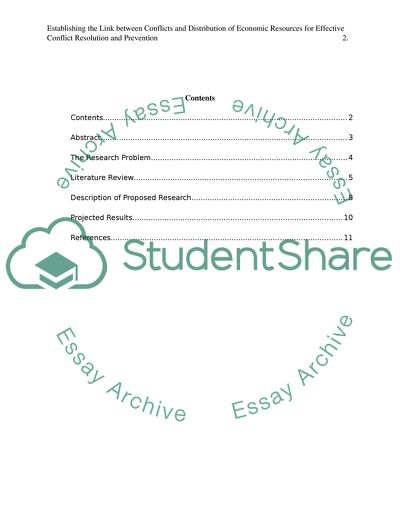Cite this document
(Establishing the Link between Conflicts and Distribution of Economic Resources for Effective Conflict Resolution and Prevention Research Proposal Example | Topics and Well Written Essays - 2000 words - 1, n.d.)
Establishing the Link between Conflicts and Distribution of Economic Resources for Effective Conflict Resolution and Prevention Research Proposal Example | Topics and Well Written Essays - 2000 words - 1. https://studentshare.org/history/1810133-2000-word-conflict-analysis-and-research-proposal
Establishing the Link between Conflicts and Distribution of Economic Resources for Effective Conflict Resolution and Prevention Research Proposal Example | Topics and Well Written Essays - 2000 words - 1. https://studentshare.org/history/1810133-2000-word-conflict-analysis-and-research-proposal
(Establishing the Link Between Conflicts and Distribution of Economic Resources for Effective Conflict Resolution and Prevention Research Proposal Example | Topics and Well Written Essays - 2000 Words - 1)
Establishing the Link Between Conflicts and Distribution of Economic Resources for Effective Conflict Resolution and Prevention Research Proposal Example | Topics and Well Written Essays - 2000 Words - 1. https://studentshare.org/history/1810133-2000-word-conflict-analysis-and-research-proposal.
Establishing the Link Between Conflicts and Distribution of Economic Resources for Effective Conflict Resolution and Prevention Research Proposal Example | Topics and Well Written Essays - 2000 Words - 1. https://studentshare.org/history/1810133-2000-word-conflict-analysis-and-research-proposal.
“Establishing the Link Between Conflicts and Distribution of Economic Resources for Effective Conflict Resolution and Prevention Research Proposal Example | Topics and Well Written Essays - 2000 Words - 1”. https://studentshare.org/history/1810133-2000-word-conflict-analysis-and-research-proposal.


